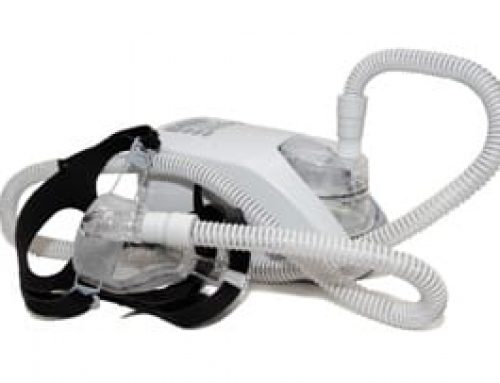Sleep-disordered breathing or SDB is the term used for breathing difficulties that occur during sleep. It can range from snoring to obstructive sleep apnea (OSA) which involves repeated episodes of airway blockage during sleep. When a child has SDB their body perceives it as a choking phenomenon. This causes their blood pressure to rise, heart rate to slow, the brain becomes aroused, and sleep is disrupted. Blood oxygen levels can also drop.
It is estimated that 10% of children regularly snore and about 2-4% have OSA. Studies that were done recently show that even mild SDB can cause the same problems as OSA.
The most prominent symptom of SDB is loud snoring that occurs almost every night. You may hear gasping or snorting noises that sometimes result in awakenings. Because of the disrupted sleep, children with SDB can be irritable, have trouble concentrating, and are sleepy during the day. Hyperactive behavior is also common, as well as bed wetting.
Does My Child Have Obstructive Sleep Apnea?
Obstructive Sleep Apnea or OSA is a very serious condition and is often overlooked in children. You can develop sleep apnea at any age, and the consequences for untreated OSA in children differ from those seen in adults. Learning what the symptoms of this condition are can help to ensure that your child does not miss a diagnosis and proper treatment.
Symptoms include:
- Snoring- Snoringalone is not an absolute sign of sleep apnea, but it does increase your child’s risk. What’s important is to listen to your child snores for any snorts, gasps, or pauses because these are signs of sleep apnea.
- Restless sleep- It can be normal for children to move around a bit while they sleep, but it could also be a symptom of an underlying sleep disorder.
- Sleeping in odd positions- Children tend to sleep in unusual positions, however, if you notice that your child frequently sleeps in an odd position, it could be that their body is trying to find a better position for airflow.
Some children are at an increased risk of developing OSA, some physical characteristics that increase their risk include:
- Enlarged tonsils and adenoids
- Being overweight
- Abnormalities involving the tongue or lower jaw
- Cerebral palsy
- Genetics
Consequences Of Untreated Sleep Disorders In Children

- Failure to thrive- Young children, even infants, can develop sleep disorders. In infants and toddlers, these disorders can cause failure to thrive. This condition is characterized by your child not putting on enough body weight. It also causes developmental delays. For children with sleeping disorders, their sleep cycle can be so disrupted that they don’t achieve deep sleep, leading to a lower than normal level of human growth hormone.
- Mouth breathing- Mouth breathing is linked with sleep apnea, and for children, it can lead to a facial structure that becomes elongated. This is a condition known as retrognathia and causes the airway to become smaller, exacerbating the sleep condition. Mouth breathing can also lead to gum disease and other dental problems.
- ADHD– As mentioned earlier, some children with sleep disorders experience hyperactivity. When adults become sleep deprived we feel sluggish and tired, as opposed to children, who become excited and defiant. They likely have trouble focusing and sitting still.
Get An Accurate Diagnosis For Your Child
 Luckily OSA and other sleep disorders are treatable. The first step is to talk to your child’s doctor to get a diagnosis. The best way to evaluate your child is wCPAP Cleaning Device VirtuCLEANith an overnight sleep study. There are different types of studies available, but many can be done in the comfort of your own home. Your child will wear a monitor to sleep that will record their breathing, pulse ox, and respiratory effort. An at-home test is usually best for children because they will be much more comfortable in their bed at home, as opposed to sleeping in a lab.
Luckily OSA and other sleep disorders are treatable. The first step is to talk to your child’s doctor to get a diagnosis. The best way to evaluate your child is wCPAP Cleaning Device VirtuCLEANith an overnight sleep study. There are different types of studies available, but many can be done in the comfort of your own home. Your child will wear a monitor to sleep that will record their breathing, pulse ox, and respiratory effort. An at-home test is usually best for children because they will be much more comfortable in their bed at home, as opposed to sleeping in a lab.
Proper diagnoses of sleeping disorders including obstructive sleep apnea, along with treatment from a CPAP machine can reverse negative consequences of these disorders. It is essential to follow the doctor’s orders and use the CPAP machine as prescribed. It is also crucial to keep the machine clean. A CPAP cleaner will make this task easy. Check out VirtuCLEAN to learn more about this CPAP cleaning device.
Any medical diagnosis can be scary when it comes to your child, but rest assured that with proper treatment your child can live a long and healthy life with no complications from OSA and other sleep disorders.




 Shop
Shop



